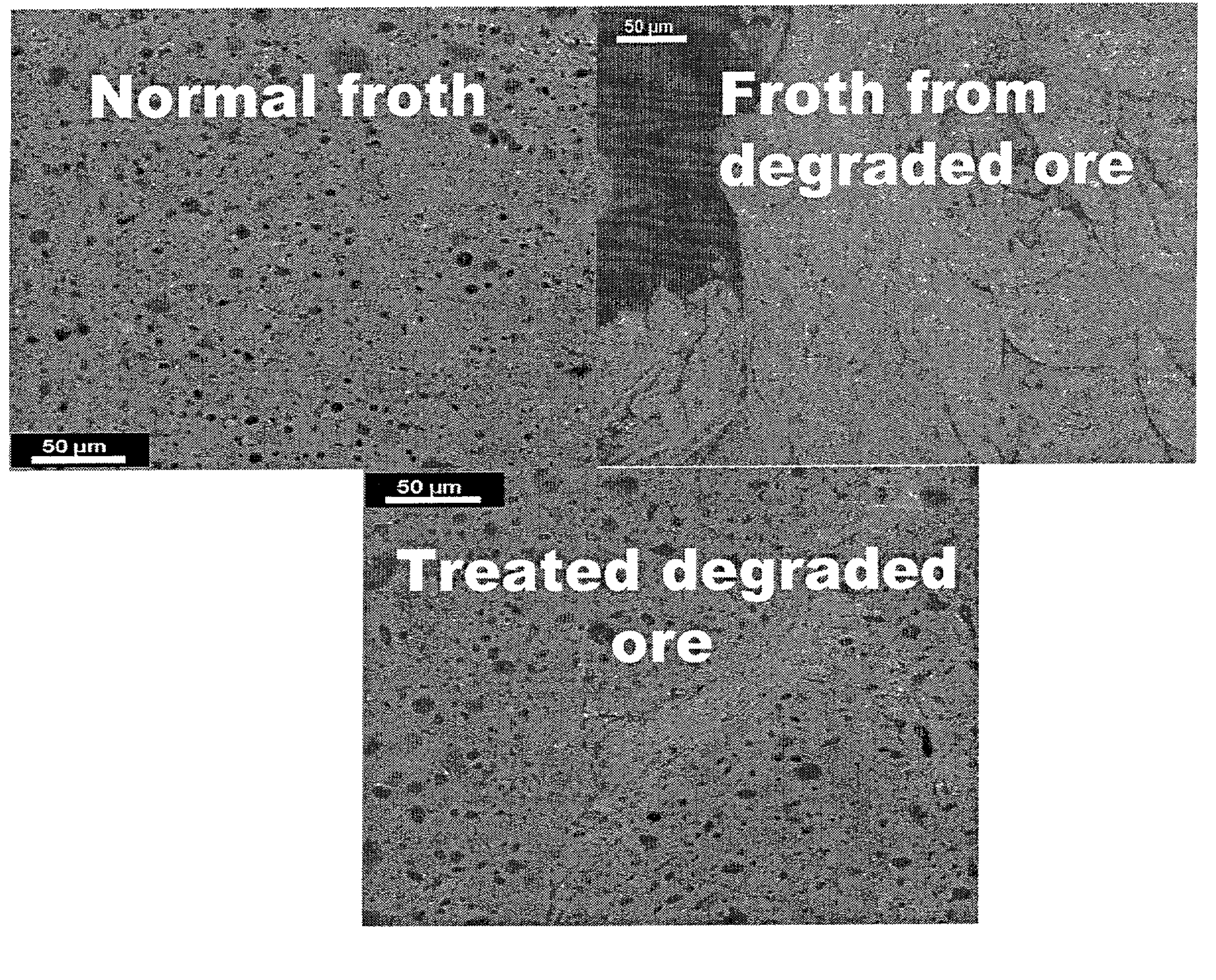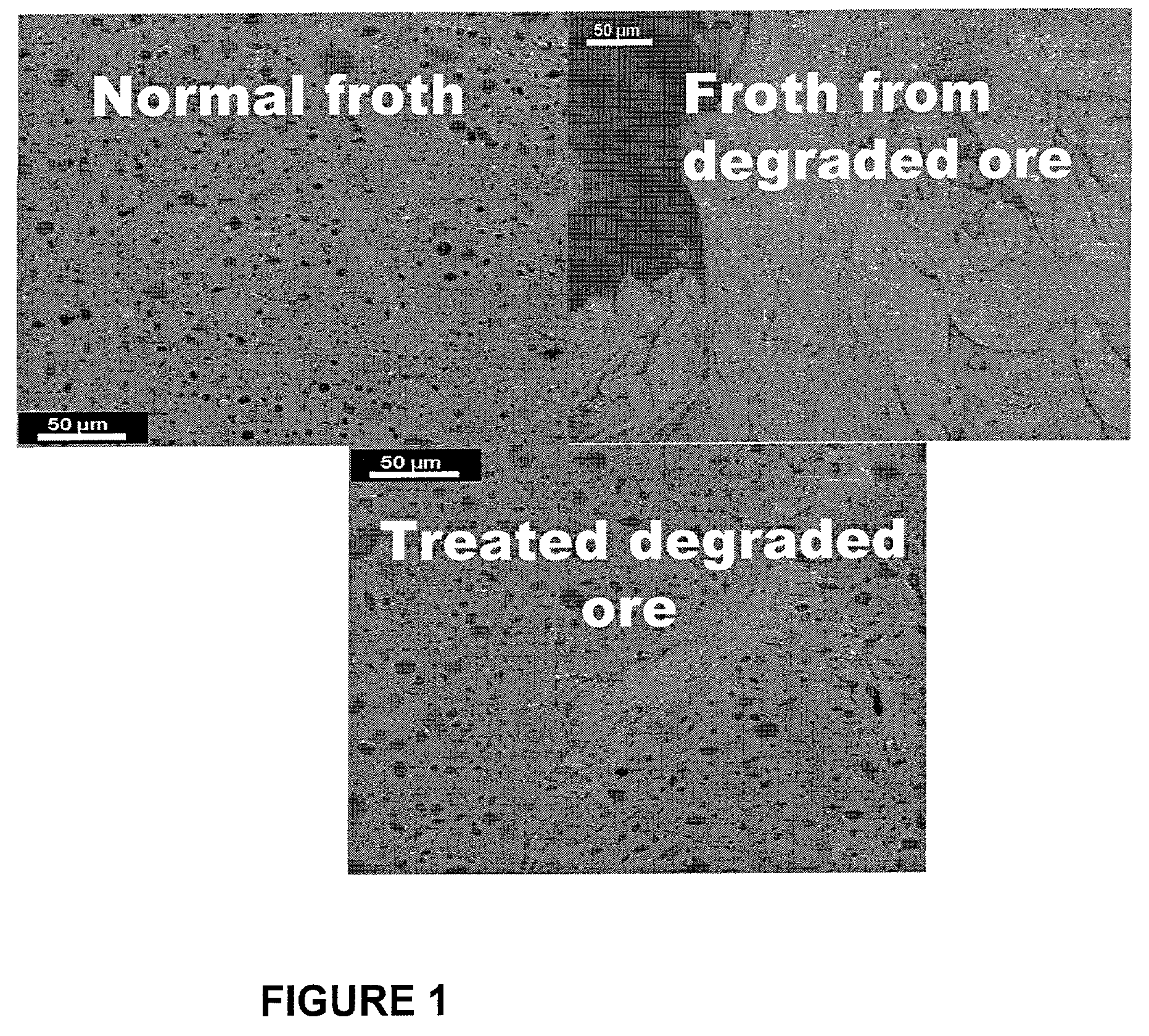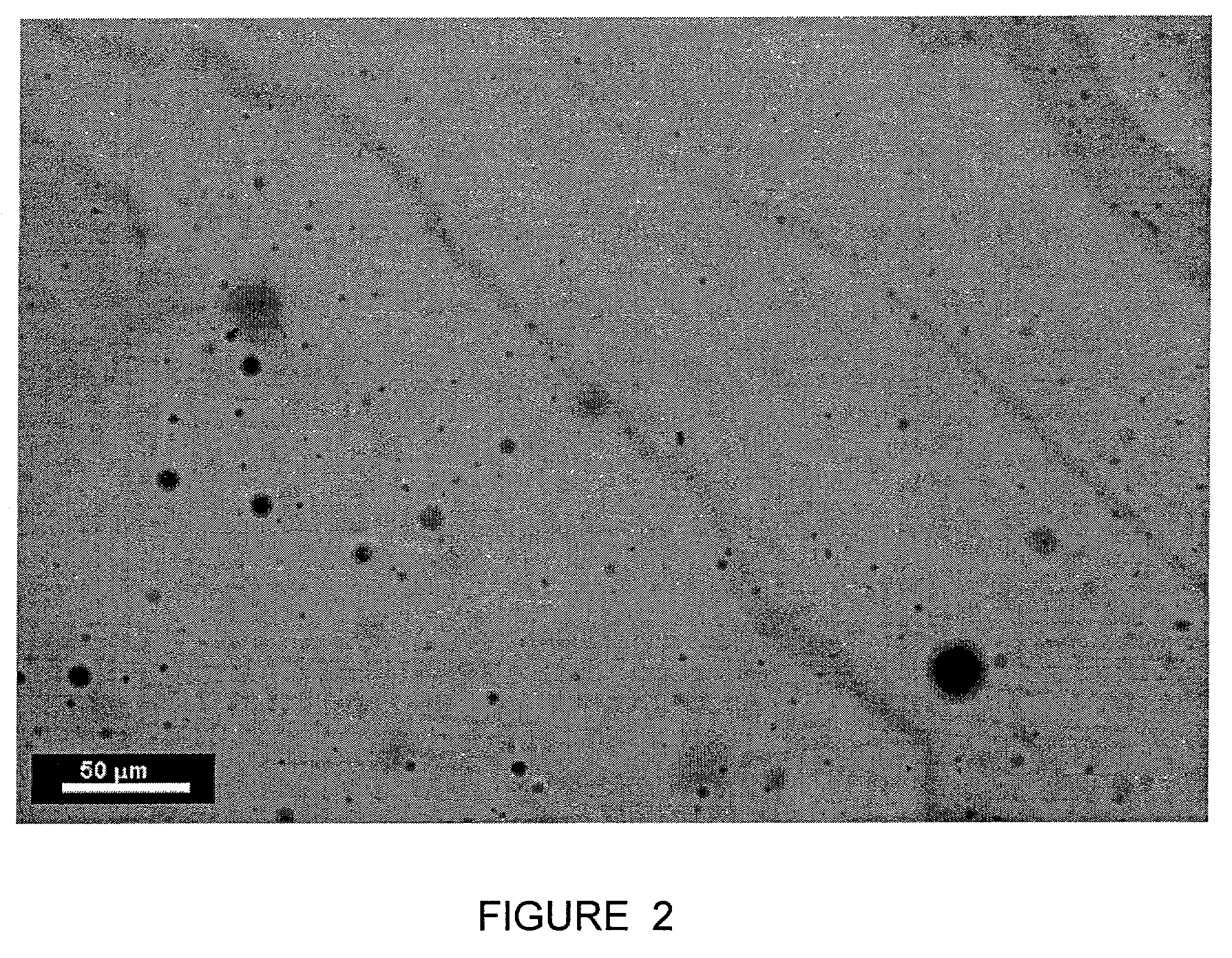Processing of oil sand ore which contains degraded bitumen
a technology of oil sand ore and bitumen, which is applied in the direction of hydrocarbon oil refining, material analysis, instruments, etc., can solve the problems of sodium hydroxide retarding the serious settling rate of tailings, increasing the cost of extraction, treatment and upgrading bitumen,
- Summary
- Abstract
- Description
- Claims
- Application Information
AI Technical Summary
Benefits of technology
Problems solved by technology
Method used
Image
Examples
example 1
Microscopic Determination of Froth to Determine Degraded Bitumen
[0038]Light microscopy (LM) was used to examine some of the samples. The froths were examined using a Nikon Microphot 2 light microscope provided with incident (reflected light) and transmitted light systems. In the reflectance mode a high-intensity mercury lamp (HBO-100W / 2) was combined with a series of filters to enable selection of the intensity and wavelength of the incident beam. A polarizer placed in the incident beam produced polarized incident light, and a second polarizer (analyzer) set at 90E with respect to the polarizer, when rotated a few degrees, provided partially cross-polarized light. By rotating the analyzer a few degrees, the degree of cross polarization could be changed to facilitate the examination of clays and sand particles.
[0039]Examination of the samples in the fluorescence mode was performed by selecting the wavelength of the incident beam using a combination of filters that provided a range fr...
example 2
[0046]Three samples with similar bitumen content but different degrees of bitumen degradation were examined by near infrared spectroscopy. The absorbance traces of the three samples are displayed on the same graph in FIG. 4. The top trace is the least degraded bitumen, and the bottom trace is the most degraded bitumen. It will be noted that as the degradation increases, the CH2 peak decreases, the OH peak becomes more pronounced and the baseline for absorbance decreases.
example 3
Corrective Treatment
[0047]A commercial hot water process bitumen extractor at the Steepbank Mine of Suncor Energy Inc. in Alberta Canada was operated with normal ore from the Steepbank mine and no addition of sodium hydroxide. Then, the process was continued with 0.20 pounds of sodium hydroxide per 2200 pounds (1 tonne) of ore. This gave a slight increase in bitumen recovery, but also an increased amount of mineral in the froth.
[0048]Following this, the ore was blended with 30% of ore having badly degraded bitumen. On the basis of the amount of ore with degraded bitumen present, the amount of sodium hydroxide was equivalent to about 0.60 pounds of sodium hydroxide per tonne (2200 pounds) of ore with degraded bitumen. After running for two hours with the blended ore, mineral content in the froth was so high that ore addition was stopped to prevent damage to process equipment.
[0049]The process was started again after the mineral had passed out of the separator cell. This time, 0.56 po...
PUM
| Property | Measurement | Unit |
|---|---|---|
| wt % | aaaaa | aaaaa |
| wt % | aaaaa | aaaaa |
| wt % | aaaaa | aaaaa |
Abstract
Description
Claims
Application Information
 Login to View More
Login to View More - R&D
- Intellectual Property
- Life Sciences
- Materials
- Tech Scout
- Unparalleled Data Quality
- Higher Quality Content
- 60% Fewer Hallucinations
Browse by: Latest US Patents, China's latest patents, Technical Efficacy Thesaurus, Application Domain, Technology Topic, Popular Technical Reports.
© 2025 PatSnap. All rights reserved.Legal|Privacy policy|Modern Slavery Act Transparency Statement|Sitemap|About US| Contact US: help@patsnap.com



